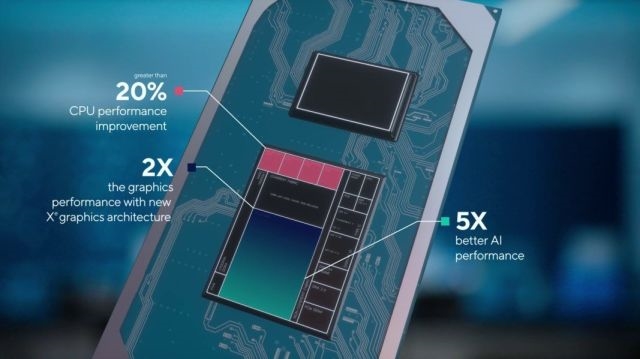Intel unveils Tiger Lake CPUs, rebrands Project Athena as ‘Intel Evo’

Intel gave us a deep look at its upcoming 11th generation ”Tiger Lake” CPUs last month — now, it’s unveiled the chips we can expect in thin and light laptops later this year. And that’s not all: the company also announced “Intel Evo,” the second iteration of its next-generation “Project Athena” initiative. That’ll make it easy for consumers to find the laptops making the most of its latest hardware. While it’s still disappointing that the company isn’t making much progress reaching 7nm chips, like its main competitor AMD, it’s clear that Intel is still trying to make its 11th generation CPUs a useful upgrade for consumers.

Before we dive into the chips themselves, let’s explore Intel Evo. You can think of it like Intel’s “ultrabook” initiative. It’ll ensure that certified machines will be running 11th-gen hardware; wake from sleep in less than a second; offer at least 9 hours of real-world battery life with 1080p screens; and support fast charging (four hours of juice with just a 30 minute charge). It was a bit confusing when the company talked up Project Athena so much without actually marketing it to consumers. Now, shoppers can just look for the Intel Evo badge.
As we explained last month, Intel is using a refined “SuperFin” FinFET transistor process in Tiger Lake, which allows the processors to reach far higher clock speeds than the previous generation. Notably, Intel says these CPUs are its biggest speed improvement within a single generation (in this case, its 10nm architecture). So sure, it would be nice to see some 7nm Intel CPUs eventually, but the company is still managing to eke out gains with its existing technology.
You’ll be able to find the new Tiger Lake CPUs in the latest notebooks from ASUS, Dell, Acer and other manufacturers later this year. I’m most interested in seeing how PC makers adapt to the Intel Evo standard. ASUS’ first Evo machine, the ZenBook Flip S, looks like a truly intriguing thin and light convertible. And I’m sure we’ll see plenty of other notebooks this year pushing the boundaries of what’s capable with super thin machines.
Intel is Tiger Lake chips in two packages: One with a 12 to 28-watt thermal profile and other reaching 7 to 14 watts. That gives PC makers the flexibility to use the CPUs in a variety of hardware designs. The fastest Tiger Lake chip will be the quad-core i7-1185G7, which features Intel Xe graphics and clock speeds ranging from 3GHz to 4.8 GHz. For the truly thin and light machines, the best you can get is the i7-1160G7 with Iris Xe graphics and a 1.2GHz to 4.4 GHz clock.

You can expect more than a 20 percent CPU speed improvement, as well as graphics that are twice as fast as last year’s (already impressive) Ice Lake graphics. While the company’s Xe graphics won’t be a replacement for true gaming fans, Intel showed off some impressive benchmarks for casual players. In Gears Tactics, an 11th-gen chip with Xe graphics reached around 55FPS, while a 10th gen chip with an NVIDIA MX350 was around 50FPS, and AMD’s Ryzn 4800U reached around 31FPS. AMD has been able to lean on its Radeon hardware to bundle better graphics with its chips for years. Now, Intel finally might be able to compete.
(40)



